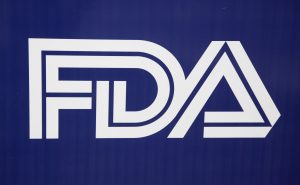Imagine your company has made every effort to produce a safe and wholesome food product. You have evaluated and approved suppliers, provided food safety training and education, implemented a HACCP Program, and Integrated Pest Management, and made all the right investments for your company’s success. Now your product is ready to load and ship to its next destination. But, how much do shippers know about the truck or rail car carrying their goods?
Food Industry Challenges and Regulations
The food industry has had its share of challenges with transportation. Regulators have been monitoring and evaluating transportation food safety for years. Initiatives such as the Sanitary Food Transportation Act began closely assessing transportation challenges. Guidance documents were published, but they never became final regulation.
The industry also has responded to these challenges and several guidelines have been developed by various trade associations and association partnerships over the last several years.
FDA Contamination Concerns
At the government level, the Food and Drug Administration (FDA) identified a list of concerns for biological, chemical or physical contamination for transportation or storage units used during food transport. These include:
– Improper temperature control.
Enjoying our insights?
Subscribe to our newsletter to keep up with the latest industry trends and developments.
Stay Informed– Improper management:
— Improper sanitation, back-hauling hazardous materials, not maintaining tanker wash records, improper disposal of wastewater, and aluminum phosphide fumigation methods in rail-car transit.
– Improper packing, which includes incorrect use of packing materials and poor pallet quality.
– Improper loading or unloading practices, conditions, or equipment.
– Improper sanitation of loading equipment, not using dedicated units where appropriate, inappropriate loading patterns, transporting mixed loads that increase the risk for cross contamination, improper sanitation of equipment, leaving raw materials on loading docks after hours.
– Poor pest control.
– Lack of driver/employee training and supervisor/manager/owner knowledge of food safety and security.
– Poor design and construction of unit.
– Inadequate preventive maintenance:
– Resulting in roof leaks, gaps in doors, and dripping condensation or ice accumulations.
– Poor employee hygiene.
– Inadequate policies for the safe and/or secure transport (or storage during transport) of foods, including lack of or improper use of security seals and improper handling and tracking of rejected loads and salvaged, reworked and returned products or products destined for disposal.
– Improper holding practices for food products awaiting shipment or inspection, including unattended product, delayed holding of product, shipping of product while in quarantine, and poor rotation and throughput.
Major Concerns & Practical Suggestions
Let’s focus on some of the most major concerns and practical suggestions to mitigate the risks of food safety incidents from occurring during transportation.
Bulk Food Transports:
Dry or liquid bulk products can be shipped via tank truck or rail car. There are special categories of food that should be closely evaluated and may require additional measures to ensure product safety. This includes liquid egg, juice and dairy. Dry products may consist of flour, sugar, salt, starch, etc.
Tanker Requirements:
Tankers must be clearly identified as food grade and be permanently dedicated. Companies should develop criteria and requirements for food-grade tankers that include types of fittings used, tankers that are cleanable and sealable, gasket material that is food grade, design criteria, etc.
Washing:

Washes may be conducted at a third-party wash service or by a wash facility maintained by the company or the transportation service. Wash facilities should be inspected and audited on a determined frequency to ensure compliance with established wash practices, site security, sanitation, pest management, facility maintenance, etc.
Inspection Prior to Loading:
Receiving personnel should be properly trained to inspect tankers prior to loading. A written procedure should be established to guide receiving personnel through the inspection process. There are two key elements to tanker inspections: documentation review and physical inspection.
Documentation review includes bills of lading that list driver’s name, verification of driver’s government-issued license and company identification against the bill of lading, wash certificate verification, and seal numbers. Additional information that may be included, depending on the type of product, would be a list of the last three loads (products) hauled to ensure they were acceptable materials.
The visual inspection is critical to verify the physical condition of the tanker and ensure proper cleaning was conducted. Inspectors must be able to access the top of the tanker safely. Appropriate measures, such as fall protection, should be provided in these load-out areas and appropriate tools, such as a shatter-resistant inspection light and a non-glass inspection mirror, should be available.
When receiving personnel are inspecting the tankers, they should follow mandated policies to minimize the concern for contaminants to be introduced into the tanker. A detailed inspection of critical items should cover:
- Verification of seal numbers prior to removing.
- Interior of tanker – clean and free of cracks, corrosion or condensate.
- Presence of off odors or any residual material in the tanker or on dome covers.
- Inspection of all seals, gaskets, pumps, valves, hoses, and hose tubing for cleanliness, integrity, and proper capping.
After Inspection:
After the inspection is conducted, all results should be documented on an inspection form and signed by the individual conducting the inspection and receiving checks. These records should be maintained on file for an established period of time. Regulated products may require a specific record retention period. For unregulated products, it may be best to maintain records for a minimum of two years.
Product loading should occur in a suitable area that is free of pest activity and will protect the tanker from possible contaminants being introduced when dome covers are opened. After all contents are loaded and the dome covers are closed, appropriate seals should be provided and seal numbers recorded.
Bulk Food Tanker Receipt:
Receipt of the bulk food tanker will closely resemble the criteria for pre-loading inspections. Record review will include the bill of lading, driver identification, wash certificates, seal numbers, etc. All receiving personnel should also be appropriately trained on how to review documentation and properly inspect the tanker prior to receipt.
Some products, such as dairy, may have specific temperature requirements, and site personnel will need to measure and record the products’ temperature upon arrival to ensure they comply with established standards. Other products, such as flour, may be received under fumigation. Site personnel should be appropriately trained to inspect and properly receive such materials.
Tanker security is an important consideration during the unloading process. During unloading, some seals will have been removed and various entry points into the tanker opened for possible ventilation requirements. The area around the tanker should be controlled and monitored to ensure unauthorized persons do not attempt to access these points. Any domes or hatches that have been opened for ventilation should be fitted with appropriate screens or filters to prevent entry of contaminants during the unloading process.
Once unloading has been completed, site personnel should again access the top of the tanker to complete a final inspection of the interior. The inspection should examine the interior and look for possible contaminants in the base of tanker, cracks, corrosion, or other foreign material concerns. If the tanker is to be returned to the supplier for reloading without a complete wash, such as for flour or salt loads, then all access points that had seals removed should be resealed and seal numbers recorded.
Non-Bulk Food Transport:
Non-bulk food items are also transported in trailers and rail cars. Many of non-bulk food products require refrigeration and must be transported and held at specific temperatures. Criteria for the condition of these trailers and rail cars should be established.
Inspection Before Loading or Unloading:
Receiving procedures and criteria should be established for these vehicle inspections. Personnel should be properly trained and educated to conduct inspections. Trailer inspection criteria should include:
- Overall exterior condition.
- No placards on the trailer or rail car that would indicate hazardous non-food items have been previously transported.
- Bill of lading indicating transportation company and contact information, driver name, seal numbers, quantity, and lot numbers of materials.
- Appropriate seals on the doors.
- Driver’s government and company-issued identification that matches the bill of lading or other documents.
- Presence of holes, gaps, or other defects in the vehicle that would allow for contaminants to enter during transport.
- Presence of off odors from previous materials or poor sanitary condition of the trailer.
- Presence of materials on the floor, such as coffee grounds or citrus-based materials, that have been spread in the trailer to mask off odors.
- All lights inside the vehicle properly covered or protected to minimize possible glass breakage.
- Visual inspection for presence of pest evidence, such as rodent or bird droppings or insect evidence.
- Proper loading of allergen and non-allergen materials. Pallets of ingredients containing allergens should not be double-stacked on top of non-allergen pallets.
- Presence of non-food items being carried in the trailer that would pose contamination concerns with food related materials.
 Refrigerated Goods
Refrigerated Goods
Refrigerated or frozen items should be evaluated to ensure proper temperatures have been maintained during transport or that the trailer or rail car is set to proper temperatures during shipment. Vehicles being loaded with temperature-sensitive items should be pre-cooled prior to loading. The set point on the refrigeration unit should be examined and the interior temperature of the vehicle taken and recorded prior to loading.
Temperatures of these items should be evaluated prior to receipt at the facility. The air temperature of the vehicle should be taken and recorded at the time of receipt. In addition, temperatures of the products should be taken to verify products are received at appropriate temperature. For a fully loaded vehicle, at least three temperatures should be taken of the products.
All shipping and receiving inspections conducted of these vehicles should be recorded on a pre-established form by receiving or shipping personnel. Actual conditions of the vehicles and products should be recorded. Personnel conducting these activities should sign these forms.
Conclusion
The safety and security of foods being transported via trailer or rail car is vital to minimize the concern for contamination. A well-developed transportation program is essential and must be executed by trained and educated personnel that have been equipped with the proper tools to carry out these inspections prior to loading or unloading bulk and non-bulk items.
(this article was prepared by Quality Assurance and Food Safety)






















